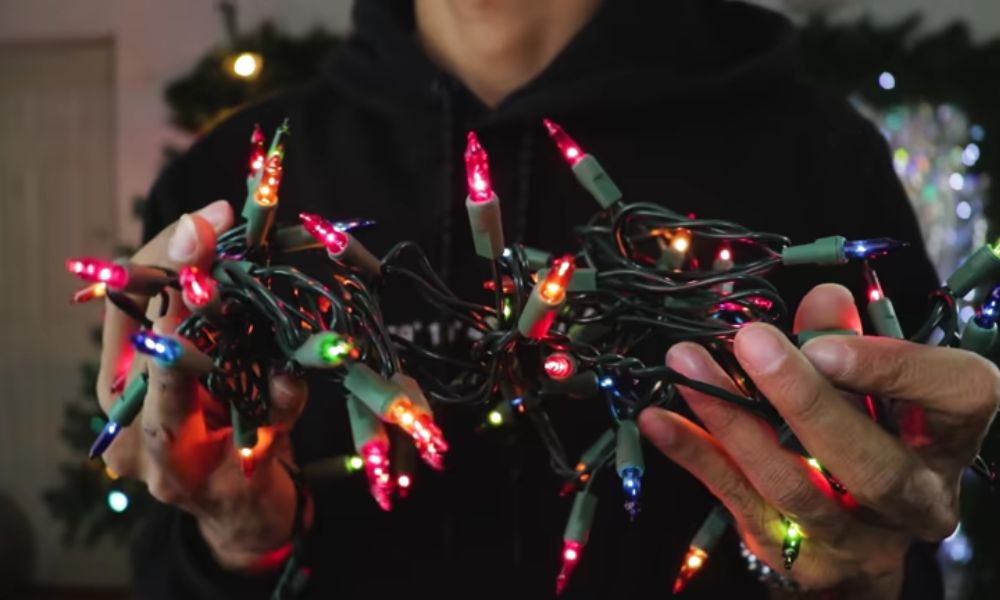Every year, I dig out my old Christmas lights. And every year, a few bulbs don’t work. That made me wonder—how long do incandescent Christmas lights last?
These lights may give off a cozy glow, but they don’t last very long. Heat, long use, and bad storage can all shorten their life. I’ve learned this the hard way—burnt fingers and tangled wires included.
In this post, I’ll share how long they really last, how to use them safely, and if it’s time to switch to LED. You’ll also see how much power they use, and which lights last the longest. Let’s make your holidays shine without the stress!
Average Lifespan of Incandescent Christmas Lights
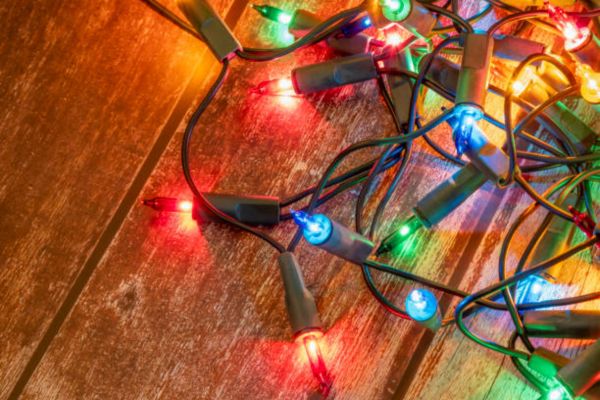
I still remember asking myself one December, how long do incandescent Christmas lights last? I’d pull out my old strands and half the bulbs would be dark before New Year’s. These lights look warm and nostalgic but don’t last forever.
Incandescent Christmas lights last about 1 to 3 holiday seasons on average.
The life of each strand depends on simple things we often overlook. Bulb quality makes a huge difference. Storing lights in a hot attic or damp basement can ruin them. And leaving them glowing all night, every night, wears them out fast. Bulb quality, storage conditions, and daily usage all affect how long incandescent lights last.
From my own experience, cheap lights rarely survived past their second season. But when I started buying better sets and coiling them neatly into a plastic box, I easily got three solid years out of one strand. With proper care, premium incandescent lights can last up to three seasons.
What Affects the Lifespan of Incandescent Bulbs?
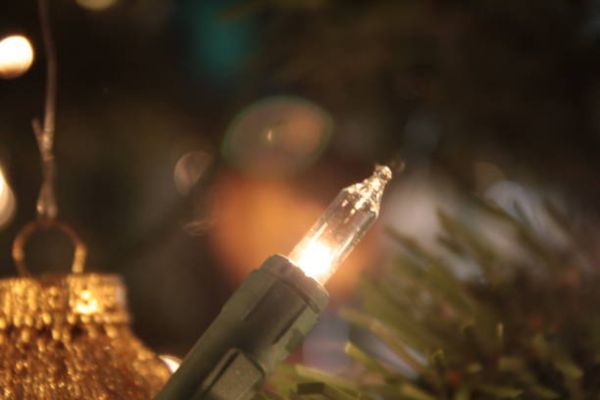
Usage Hours Per Day
How long you leave your lights on each day matters more than you think. I used to keep mine glowing from sunset to bedtime during the holidays. Not surprisingly, they started fading faster each year. The longer incandescent lights stay on each day, the shorter their lifespan.
Storage Conditions
After the season ends, storing your lights the wrong way can silently destroy them. I once left a box of lights in a humid storage room, and by next Christmas, half the strand was dead. Poor storage—like too much heat, moisture, or tangled cords—can ruin incandescent lights before the next season even starts.
Quality of the Bulb
Not all Christmas lights are created equal. I learned the hard way that cheap dollar-store sets tend to fail after just one season. In contrast, better-quality sets with thicker wires and stronger bulbs last much longer. Cheap incandescent lights burn out faster than higher-quality, premium bulb sets.
Power Load and Wattage
Running too many strands on one circuit may seem fine—until the breaker flips or the bulbs overheat. I’ve tried connecting five strands in a row and ended up with blown fuses and melted plugs. Overloading a single outlet or extension cord causes stress on the bulbs, which can shorten their life quickly. Overloading circuits or daisy-chaining too many strands together can cause incandescent bulbs to burn out early.
LED vs Incandescent Christmas Lights – Which Lasts Longer?
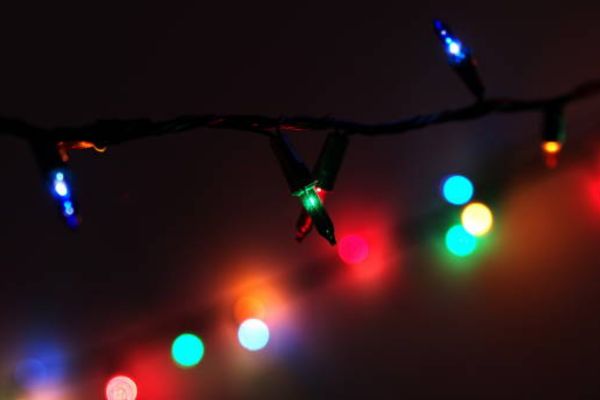
If you’re tired of changing bulbs every year, I’ve been there. That’s what pushed me to try LED lights. Not only do they glow brighter, but they also last much longer than the old-school ones. LED Christmas lights can last up to ten times longer than incandescent strands, making them a smart choice for stress-free decorating.
From what I’ve seen, LED Christmas tree lights last longer with fewer burnouts. While incandescent strands might last a season or two, LEDs often keep working year after year. I’ve had some running strong for five seasons straight—no dark spots, no mid-December surprises.
And let’s talk money. Sure, LED lights cost more at first. But LEDs use far less power and need fewer replacements, so you end up saving over time. My electric bill dropped a bit during the holidays after I switched, which was a nice bonus.
Still, I know some people love that warm, classic glow from incandescent bulbs. It reminds them of old family traditions. I felt the same. But these days, LED vs incandescent Christmas lights is more about style than function, because modern LEDs now come in soft, warm tones too.
Regular Christmas Lights vs LED – Energy and Cost
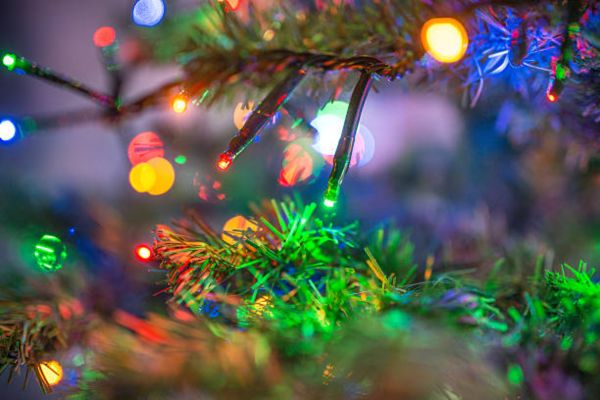
When it comes to energy use, regular incandescent Christmas lights use a lot more power than LEDs. I didn’t notice it at first, but after one holiday season, I saw a real jump in my electric bill. LEDs, on the other hand, stay cool and sip power like a pro. They’ve helped me cut down both heat and costs
How Many Watts Are Christmas Lights?
Let’s break it down. A 100-bulb strand of incandescent lights uses about 40 to 80 watts, depending on bulb size. In contrast, a 100-bulb strand of LED lights uses just 5 to 10 watts. That’s a huge difference when you’re lighting a whole house. LED lights use up to 90% less electricity than regular incandescent Christmas lights.
Do Christmas Lights Use a Lot of Electricity?
If you run ten strands of incandescent lights for six hours a day, you could spend $30–$40 extra in December. With LEDs, that cost might drop to just $5 or less. I’ve tested this myself using a power meter, and the savings were clear. Yes, Christmas lights can use a lot of electricity—but LEDs keep your bill low.
Eco-Friendly and Budget-Wise
Switching to LED lights isn’t just good for your wallet—it’s better for the planet too. Less power means fewer emissions, especially if millions of homes make the switch. I feel better knowing I’m using less energy during the holidays. LED Christmas lights are a more eco-friendly and cost-effective choice than traditional lights.
Tips for Long Lasting Christmas Lights
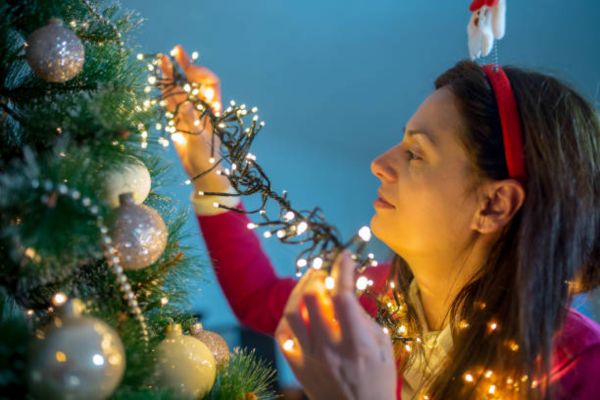
If you want long lasting Christmas lights, a little care goes a long way. I’ve made simple changes that helped my lights survive year after year—no fancy tools needed.
Start with how you store them. I used to shove mine into a plastic bag and toss it in the closet. Big mistake. Now I wind them gently around spools or cardboard and place them in a dry box. Proper storage using spools or containers helps prevent damage and makes lights last longer.
Also, don’t leave your lights on all night. I used to enjoy the glow while sleeping, but it wasn’t worth the strain on the bulbs. Turning off Christmas lights overnight helps extend their lifespan.
If one bulb goes out, replace it right away. A missing bulb can cause stress on the rest of the strand, especially with older incandescent sets. Replacing burnt-out bulbs quickly helps your light sets last longer.
Every year, I take down my lights right after New Year’s. I clean them, wrap them neatly, and store them right. It’s a small routine, but it makes a big difference. A careful wrap-up and storage routine leads to longer-lasting Christmas lights.
FAQs
Are incandescent Christmas lights safe to leave on overnight?
It’s not recommended. These lights can get hot and pose a fire risk if left on for too long.
Do LED Christmas tree lights last longer than incandescent?
Yes, LED lights last much longer—often up to 10 times more than regular incandescent lights.
How many watts are typical Christmas lights?
A 100-bulb incandescent strand uses about 40 to 80 watts, while the same LED strand uses only 5 to 10 watts.
Do Christmas lights use a lot of electricity compared to LEDs?
Yes, incandescent lights use much more electricity. LEDs are far more energy-efficient and cost less to run.
Conclusion
Incandescent lights have their charm. They’re cheap, easy to find, and give off a soft, cozy glow. But they don’t last long and use a lot more power. LED Christmas lights cost more at first, but they last longer and save money over time.
I used to stick with incandescents out of habit. Then I tried LEDs during one snowy December. I was surprised at how bright, cool, and easy they were. Still, I keep one old strand of warm white incandescents tucked away—for that little touch of nostalgia.

